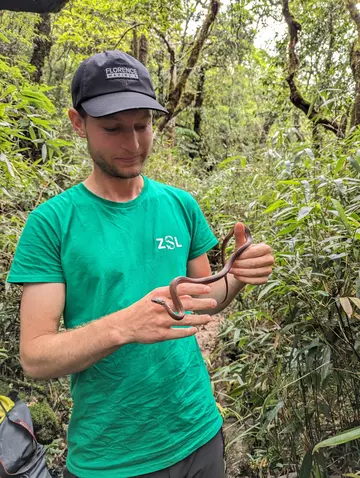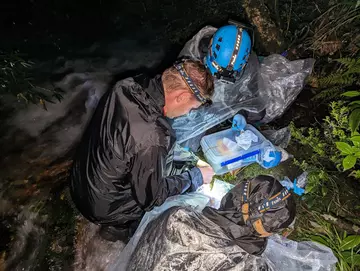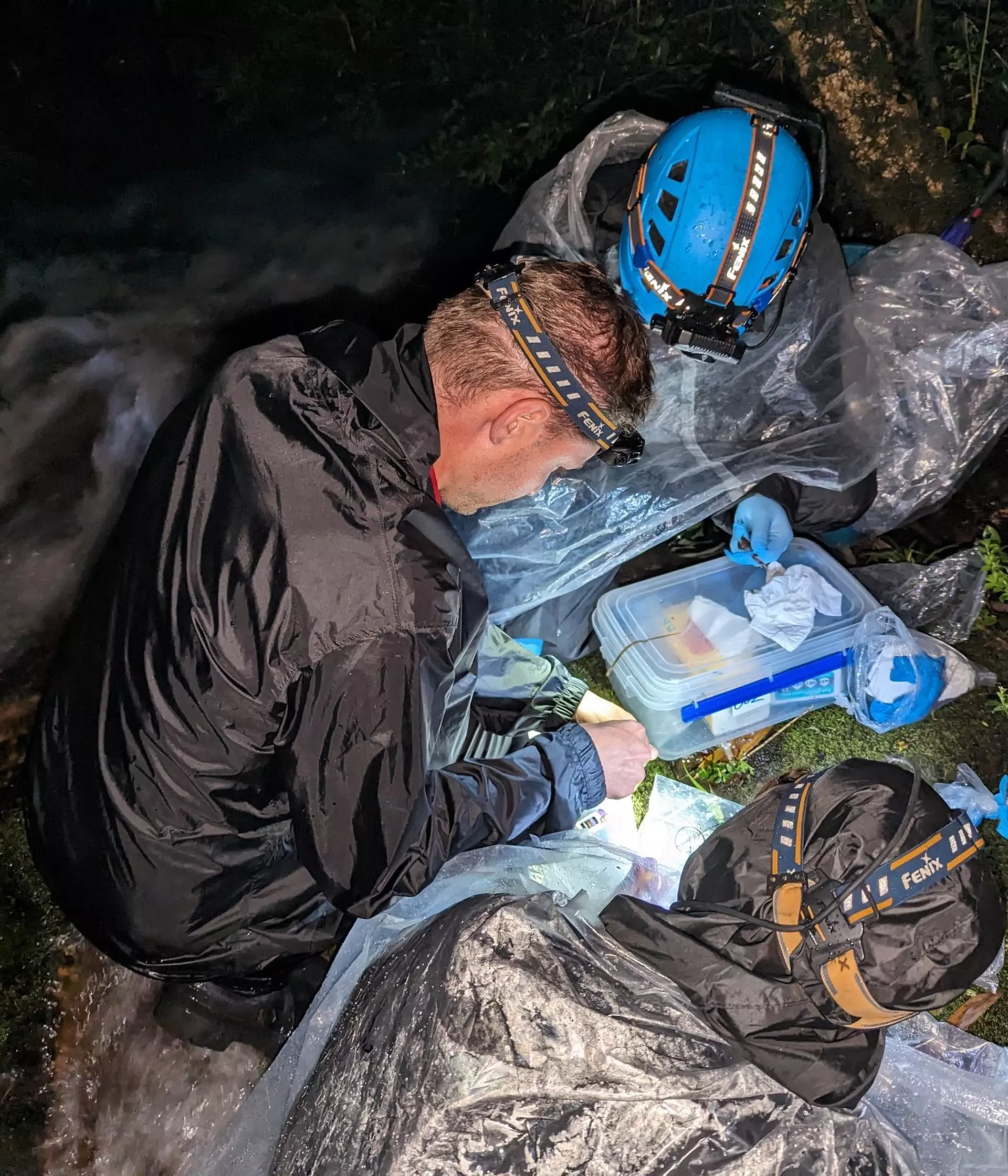
Our global; science-led work is deeply rooted in our two conservation Zoos. Based at London’s near 200-year-old Herpetology department, Team Leader Daniel Kane has recently returned from a trip taking his, and the section’s, expertise to Vietnam.
This work follows from previous expeditions to the region by our world-leading reptile and amphibian experts which, collectively, have helped form the longest-running continuous amphibian monitoring programme in South East Asia. During this period several species have been confirmed to occur in Vietnam for the first time, several new species of amphibian and reptile have been formally described by science and a deeper insight into the lives of some important focal species has been attained.

Mount Fansipan is Vietnam's highest mountain, standing at an impressive 3,143m tall. For almost a decade this mountain and its foothills have been a key site for ZSL along with international partners to study the unique amphibians and reptiles living there.
For two weeks in May and June I joined EDGE Hero award recipient Luan Thanh Nguyen for surveys to collect relevant data from this incredible area.
Our main mission was to collect samples from two target species of frog; Sterling's toothed toad (Oreolalax sterlinage) and Botsford's leaf-litter frog (Leptobrachella botsfordi).
These samples will enable us to assess various population characteristics, such as the total number of frogs in the area and how related they are to one another. Both frog species are threatened with extinction and so far only confirmed to live in this remote region of Vietnam's far north, from around 2,400m elevation up towards the top of the peaks. Additional to this, all encountered frog individuals were swabbed which will allow the monitoring of presence of strains of chytrid fungi, the major driver of global amphibian extinctions in recent years.
Furthermore, environmental DNA (eDNA) samples were collected from key sites which, when analysed, will allow a fine-scale faunal inventory to be undertaken, helping us detect not only the presence of DNA from our target species, but also other vertebrate animals present in the water systems of the chosen sites.
Along the way we were also able to encounter and record several species of reptile and amphibian potentially unknown to science. All in all, no time to slow down!
Our visit was timed for the rainy season and we spent nine days camping in the mountains close to selected field sites. Nights one and two were spent at a camp at 2200m and here we surveyed two different areas, both after dark and during daytime.
While the two target species were not known to occur here, we did encounter a species of viper as yet potentially undescribed by science, as well as many frogs of varying species which we were able to swab for pathogen monitoring and record vocalisations of. These call recordings can play a key part in differentiating between species which may appear superficially similar, and this data helps strengthen any argument for future species delineation.
Simply put, we need to know which species are living where so we can have a hope of understanding and conserving them.

Nights three to six were spent up at 2800m in a camp just a moment's walk from the type locality of one of our target species. We have been undertaking monitoring of this species here for almost 10 years and during that time have witnessed ongoing degradation of the habitat.
Without knowing what effect this was having on the frogs it was important that we collected data which would allow us to accurately document the various population parameters which could feed into the future conservation management strategy for these species within the Hong Lien National Park.
With plenty of rain we were able to see over 60 of the incredible sterlingae though, strangely, not a single botsfordi. During the day we also came across a Chinese bamboo snake which, on closer inspection, had recently eaten a Sterling’s toothed toad making this snake the first known predator of O. sterlingae.
After summiting and dropping down the other side, nights seven to nine were spent at 2600m. This site was steep and rugged and provided us with enough of both target frog species (50+ sterlinage and 15 botsfordi), plus a host of other interesting herps, to really make this trip a success. Across two nights we were able to take samples and detailed images of another viper of the suspected new species.
Not long after leaving this camp and starting the long hike down to the town (1200m elevation) we were extremely fortunate to encounter a keelback snake which our team described as new to science just last year and named in honour of the local H'mong community with whom it shares these mountains. A fantastic moment to see just the second specimen of this species known to science!
Our final few nights were spent in sites closer to the town of SaPa, which meant the first tepid showers in 8 nights and a chance to see some lower-elevation species of reptile and amphibian. We spent time swabbing frogs in several locations as well as encountering a small skink which we suspect may be awaiting formal specific designation.
All in all, our trip achieved the main objectives of collecting eDNA and physical samples from across various habitat types and elevational ranges in these mountains and, after these have been analysed, we hope to have a more complete understanding of the amphibians and reptiles of the Hoang Lien range and their conservation requirements.
